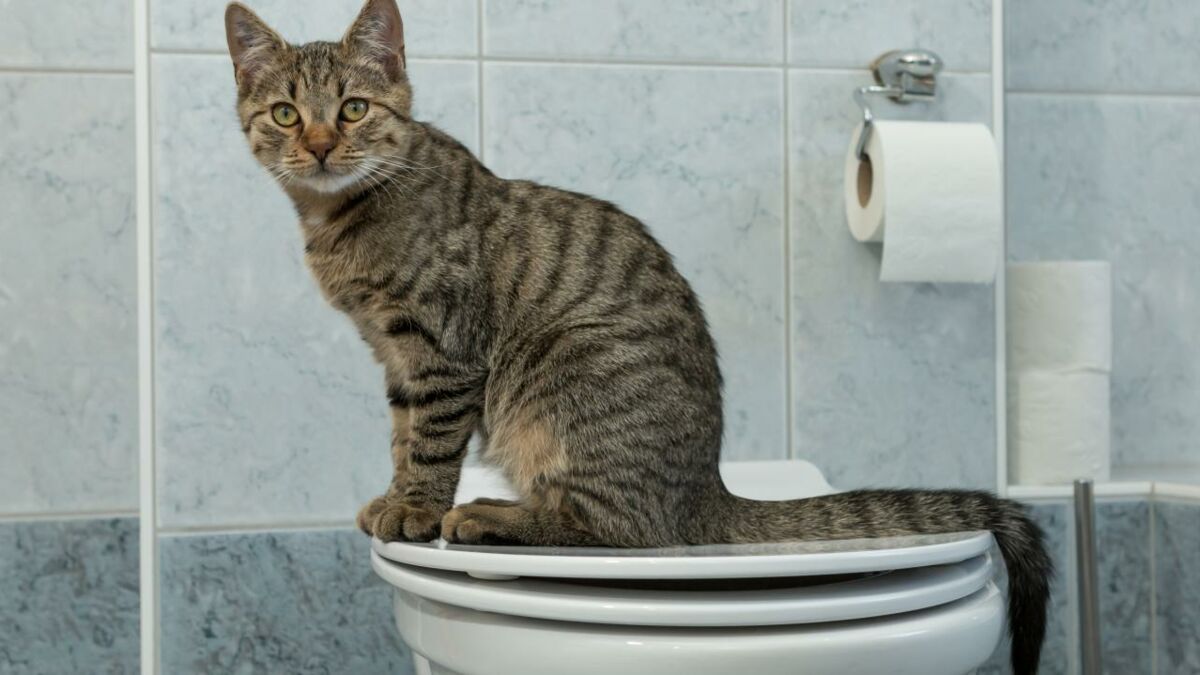Prevent Clogs and Damage: Never Flush Cat Poop Down Your Toilet - Expert Recommendations
ClickWe have uncovered this great article pertaining to Don’t flush cat feces down the toilet down the page on the internet and think it made good sense to relate it with you on this page.

Introduction
As feline owners, it's essential to be mindful of just how we deal with our feline close friends' waste. While it may appear convenient to purge cat poop down the bathroom, this practice can have harmful consequences for both the atmosphere and human health and wellness.
Alternatives to Flushing
Luckily, there are safer and more responsible ways to get rid of cat poop. Take into consideration the following alternatives:
1. Scoop and Dispose in Trash
One of the most typical method of throwing away cat poop is to scoop it right into an eco-friendly bag and throw it in the garbage. Be sure to utilize a dedicated clutter inside story and get rid of the waste without delay.
2. Use Biodegradable Litter
Go with biodegradable cat trash made from materials such as corn or wheat. These litters are eco-friendly and can be safely thrown away in the trash.
3. Bury in the Yard
If you have a lawn, take into consideration burying feline waste in a marked area far from veggie yards and water resources. Be sure to dig deep enough to prevent contamination of groundwater.
4. Install a Pet Waste Disposal System
Purchase a family pet waste disposal system especially made for pet cat waste. These systems use enzymes to break down the waste, minimizing odor and ecological impact.
Wellness Risks
In addition to environmental worries, purging cat waste can additionally present health threats to people. Feline feces might include Toxoplasma gondii, a parasite that can trigger toxoplasmosis-- a possibly extreme disease, particularly for expectant ladies and people with weakened body immune systems.
Environmental Impact
Flushing cat poop presents hazardous microorganisms and parasites into the water, posturing a significant danger to water communities. These pollutants can negatively affect marine life and concession water top quality.
Verdict
Liable pet dog ownership extends beyond providing food and sanctuary-- it likewise involves proper waste management. By refraining from flushing pet cat poop down the bathroom and opting for alternative disposal techniques, we can decrease our ecological impact and safeguard human health.
Why Can’t I Flush Cat Poop?
It Spreads a Parasite
Cats are frequently infected with a parasite called toxoplasma gondii. The parasite causes an infection called toxoplasmosis. It is usually harmless to cats. The parasite only uses cat poop as a host for its eggs. Otherwise, the cat’s immune system usually keeps the infection at low enough levels to maintain its own health. But it does not stop the develop of eggs. These eggs are tiny and surprisingly tough. They may survive for a year before they begin to grow. But that’s the problem.
Our wastewater system is not designed to deal with toxoplasmosis eggs. Instead, most eggs will flush from your toilet into sewers and wastewater management plants. After the sewage is treated for many other harmful things in it, it is typically released into local rivers, lakes, or oceans. Here, the toxoplasmosis eggs can find new hosts, including starfish, crabs, otters, and many other wildlife. For many, this is a significant risk to their health. Toxoplasmosis can also end up infecting water sources that are important for agriculture, which means our deer, pigs, and sheep can get infected too.
Is There Risk to Humans?
There can be a risk to human life from flushing cat poop down the toilet. If you do so, the parasites from your cat’s poop can end up in shellfish, game animals, or livestock. If this meat is then served raw or undercooked, the people who eat it can get sick.
In fact, according to the CDC, 40 million people in the United States are infected with toxoplasma gondii. They get it from exposure to infected seafood, or from some kind of cat poop contamination, like drinking from a stream that is contaminated or touching anything that has come into contact with cat poop. That includes just cleaning a cat litter box.
Most people who get infected with these parasites will not develop any symptoms. However, for pregnant women or for those with compromised immune systems, the parasite can cause severe health problems.
How to Handle Cat Poop
The best way to handle cat poop is actually to clean the box more often. The eggs that the parasite sheds will not become active until one to five days after the cat poops. That means that if you clean daily, you’re much less likely to come into direct contact with infectious eggs.
That said, always dispose of cat poop in the garbage and not down the toilet. Wash your hands before and after you clean the litter box, and bring the bag of poop right outside to your garbage bins.
https://trenchlesssolutionsusa.com/why-cant-i-flush-cat-poop/

As an enthusiastic person who reads on How to Dispose of Cat Poop and Litter Without Plastic Bags, I thought sharing that editorial was sensible. So long as you enjoyed reading our page kindly be sure to share it. Thanks a lot for your time. Don't forget to check our blog back soon.
Call Today